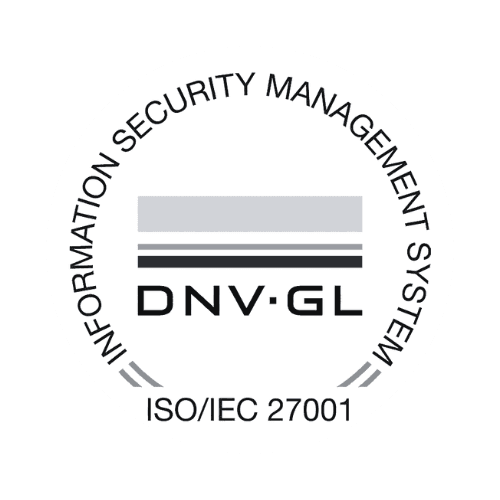Nichts verpassen & anmelden:
Written by AI
How Technology is Revolutionizing the Workplace and Enhancing Employee Engagement
In today's digital age, technology has a tremendous impact on the workplace and employee engagement. From automation of tasks to improving communication and collaboration, technology has enabled a revolutionary change in the work environment. In this article, we will explore the role of technology in the workplace revolution, how it promotes employee engagement, and take a look at the future. Additionally, we will also consider the challenges and solutions in implementing technology in the workplace.
The Role of Technology in the Workplace Revolution
Technological changes have transformed workplaces in many ways. Understanding these changes is crucial to effectively leverage the shift and enhance employee engagement.
Understanding Technological Changes
The introduction of technologies such as artificial intelligence, big data, and cloud computing has led to new ways of working. Through automation, repetitive tasks can be performed efficiently, allowing employees to focus their skills on more demanding tasks. Furthermore, the availability of data facilitates better decision-making and opens up new insights for companies.
Technology as a Catalyst for Change
Technology has accelerated change in the workplace. Companies have developed new business models and can respond more quickly to market changes. Digital transformation has also changed the way employees work and communicate with each other. The workplace revolution is closely linked to the development and spread of new technologies.
The integration of technology into the workplace also impacts workplace culture. Companies must ensure that their employees have the necessary skills to effectively deal with the new technologies. This often requires training and continuing education measures to ensure that the workforce possesses the required competencies. Moreover, the introduction of new technologies may lead to changes in company structure, as certain roles may become redundant or new positions may need to be created to support the technology.
The Future of Work in the Age of Technology
The use of technology in the workplace is expected to continue to increase as companies strive to operate more efficiently and remain competitive. This will lead to an intensified integration of technologies such as the Internet of Things (IoT) and machine learning, which will open up new possibilities for workplace design. It is crucial for companies to continuously adapt to the changing technological landscape to be successful and to bring their employees along on the journey.
Technology and Employee Engagement
The introduction of technology also has an impact on employee engagement. New tools and communication platforms expand opportunities for collaboration and encourage employee involvement.
However, integrating technology into day-to-day work can also bring challenges. It is important for companies to ensure that their employees have the necessary skills and training to effectively utilize the new technologies. Training programs and ongoing support are critical to ensure that employee engagement is not harmed by technology.
How Technology Promotes Engagement
Collaborative work environments and tools enable employees to work together more effectively and share ideas. Utilizing virtual meetings and project management software facilitates communication across geographic boundaries. Additionally, the flexibility of remote work allows for a better work-life balance and contributes to increased employee engagement.
Another important aspect of how technology can promote employee engagement is the opportunity for individual development. By accessing online learning platforms and training materials, employees can continuously improve their skills and advance their careers, which in turn increases their engagement and motivation.
The Impact of Technology on Employee Satisfaction
Employee satisfaction leads to higher productivity and engagement. Technology can help enhance employee satisfaction by improving efficiency and optimizing work processes. By automating tasks that were previously seen as tedious, employees can focus their time and energy on more fulfilling activities.
Another factor that influences employee satisfaction through technology is the ability to work flexibly. By using tools that allow employees to adjust their work hours and locations, they can find a better balance between work and personal life. This results in greater satisfaction at work and helps employees stay motivated and engaged in the long term.
The Future of Technology in the Workplace
Technological development in the workplace is still in its infancy, and new innovations are expected to continue emerging. A look into the future gives us an idea of how the workplace will evolve.
Forecasting Technological Developments
Artificial intelligence will play an increasingly larger role and enable even more efficient automation. The growing use of virtual reality and augmented reality will also change how employees learn and interact. Furthermore, the digitization of processes and data will continue to advance, creating new opportunities for companies.
Technology and the Evolution of Work Culture
Technology has already led to an evolution of work culture. Remote work and flexible hours are now widespread and provide employees with more flexibility and freedom. The culture of collaboration and knowledge sharing will be further strengthened by technology, as employees can seamlessly work together regardless of their location.
An interesting aspect of future technological development in the workplace is the increasing integration of wearable technology. These devices, worn on the body, can improve employee efficiency and health. For example, smartwatches can send reminders for breaks and movement to enhance productivity and promote health.
Another promising trend is the use of blockchain technology in the workplace. Blockchain provides a secure and transparent method for managing data and transactions. Companies can leverage this technology to ensure the integrity of information and enhance efficiency in various business processes.
Challenges and Solutions in Implementing Technology
Although the introduction of technology can offer many benefits, there are also challenges to be addressed. Companies must tackle these challenges to fully harness the potential of technology.
In implementing technology, companies often encounter common obstacles. One of these obstacles is resistance to change. Employees may fear new technologies or changes. However, clear communication and training can help to overcome these concerns. By demonstrating the benefits and value of new technologies to employees, companies can minimize resistance.
Another obstacle is the lack of technological competence among employees. Not all employees possess the necessary knowledge and skills to effectively utilize modern technologies. This is where training and development come into play. Companies should invest in training programs to give their employees the opportunity to enhance their technical knowledge and adapt to new technologies. Through such investments, companies can ensure that their employees possess the necessary skills to successfully utilize technology.
Strategies to Overcome Technological Challenges
Change Management: A well-planned and thoughtful implementation of technology is vital. Involving employees in the process from the beginning and communicating the benefits are important strategies to minimize resistance. Companies should ensure that their employees understand why the changes are occurring and how they can benefit from them.
Training and Development: Investing in training and development programs helps employees expand their technical knowledge and adapt to new technologies. Companies should ensure that their employees have access to training tailored to their specific needs.
Collaboration: Collaboration between different departments and teams is essential to smoothly implement technology. An interdisciplinary team can tackle challenges together and find solutions. Companies should foster a culture of collaboration and ensure that different departments communicate and share their knowledge.
Technology has revolutionized the workplace and will continue to do so. Companies that leverage the benefits of technology while addressing the challenges can strengthen employee engagement and gain a competitive edge. It is important to understand the change, actively involve employees, and develop strategies to overcome obstacles. The future of the workplace is characterized by innovation and collaboration, with technology playing a central role.
An example of an innovative technology that has revolutionized the workplace is the introduction of artificial intelligence (AI). AI enables companies to automate complex tasks and analyze data in real time. By utilizing AI, companies can work more efficiently and make informed decisions. However, the implementation of AI also presents challenges. Companies must ensure they have the right data and that the AI algorithms are correctly and ethically programmed.
Another example of an innovative technology is the Internet of Things (IoT). The IoT enables the interconnection of devices and sensors to gather and analyze data. Companies can leverage the IoT to optimize their production processes, increase efficiency, and explore new business opportunities. However, implementing IoT requires a secure and reliable network infrastructure, as well as privacy measures to ensure the safety of the collected data.








